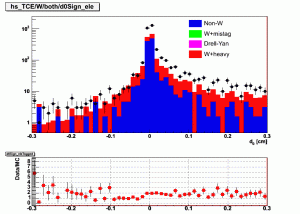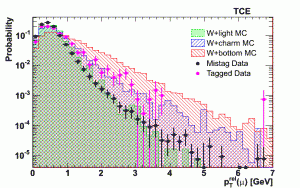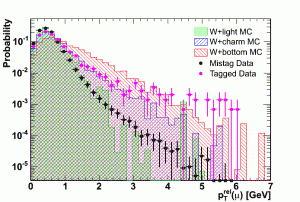Using the tag and mistag rates that we have now, I have calculated the predicted number of W+soft dilepton events in the 1 fb-1 sample. The calculation is slightly different for the same and opposite flavor dilepton cases. We will show the dielectron case as the same-sign example.
| Lepton 1 | Lepton 2 | Normalization |
|---|---|---|
| el | el | R21(ej,ej)*N(ej)+R21(eDY,eDY)*N(eDY) |
| el | eh | R21(el,eh)*N(eh) |
| eh | eh | R21(eh,eh)*N(eh) |
The notation used is as follows
- e=electron, m=muon
- l=light, h=heavy
- j=W+jets, DY=Drell Yan
- R21(a,b) = N(a+b)/N(b) [from MC]
Below is the different flavor case.
| Lepton 1 | Lepton 2 | Normalization |
|---|---|---|
| el | ml | R21(mj,ej)*N(mj)+R21(mDY,eDY)*N(mDY) |
| el | mh | R21(el,mh)*N(mh) |
| eh | ml | R21(ml,eh)*N(eh) |
| eh | mh | R21(eh,mh)*N(mh) |
The results are below.
Continue reading Number of predicted and observed dilepton events in 1 fb-1


































